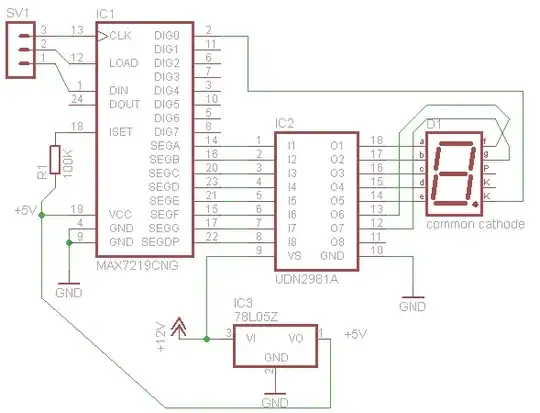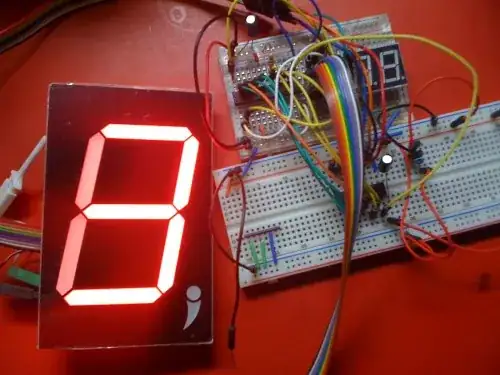Change R1 to be 40-50kohm.
100kohm is way off the charts (literally its not even on the chart in the datasheet) for the device so i would venture a guess that the current limit is so low that they 7221 can't drive the inputs of the 2981 adequately causing the output voltage to drop to the point that its causing the malfunction.
You have a second problem as well. The DIG0 pin has to sink all the current from the common cathode. Are you sure your within the limits of the 7221's current sinking limits? Even more a problem, when the DIG0 isn't driving it doesn't tri-state but pulls to V+ which +5V vs the LED drivers +12V. In this one digit case that may be ok but it means that digit will never turn all the way off, you couldn't hook up a second digit like this. It also could mean that if DIG0 goes high and a segment is driven low, it will see a reverse 5V across the LED, i have no idea the reverse voltage specs on such a driver, but worth a safety check.
One interesting idea. When the LED drive is high (+12V) if the DIG0 line is released (+5V) your basically applying 12-LEDdrop to the +5V line on the 7221, that should result is fairly high current, as much as the LED will pass. It looks like the 7221 survives this, but if its current limit kicks in for all IO, this current may be triggering the rest of the chip into current limiting mode causing the SEG-IO pins to drop in voltage. Just a random guess tho, either way use a P-channel FET to control the common cathode to ground and see if that solves the problem.

